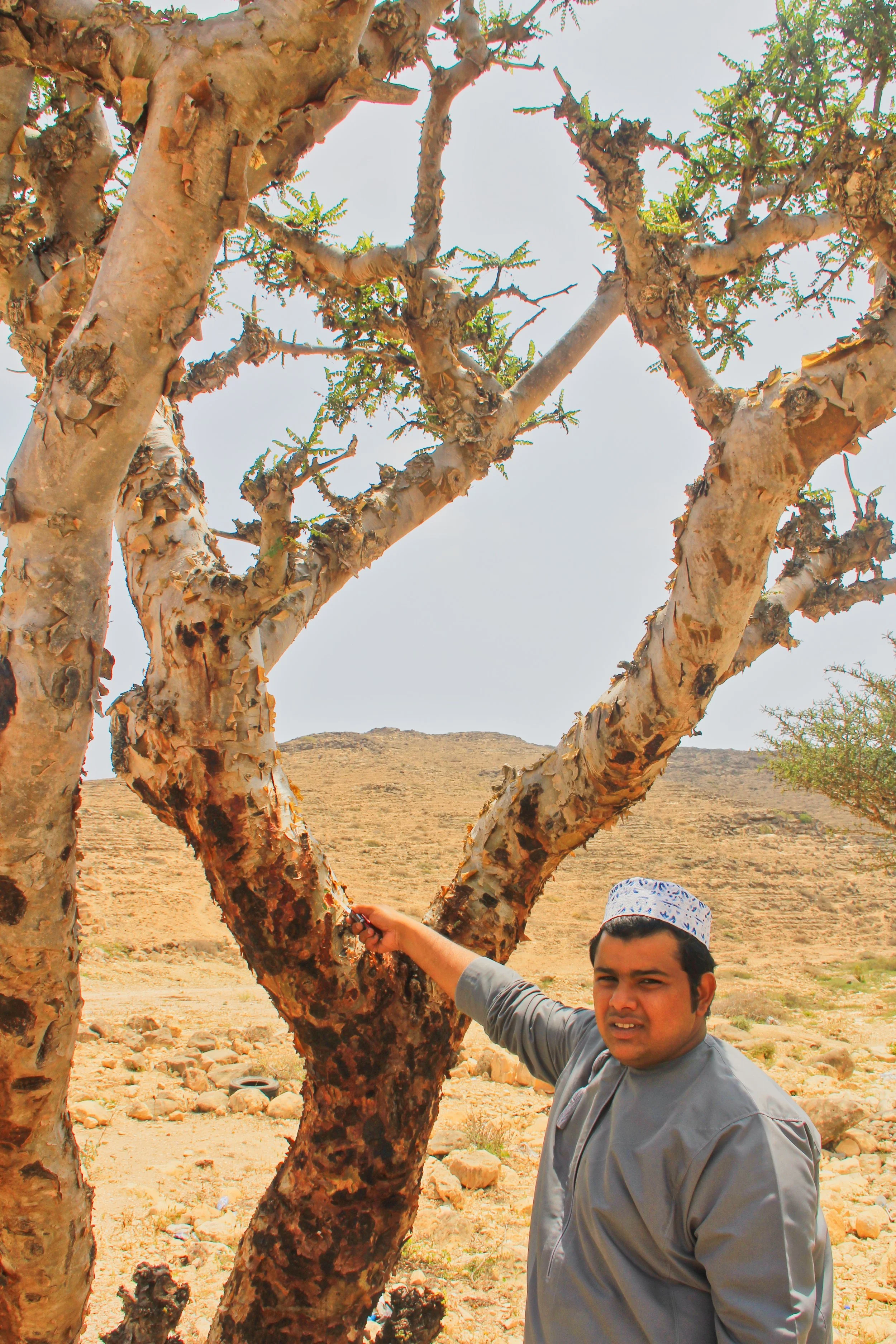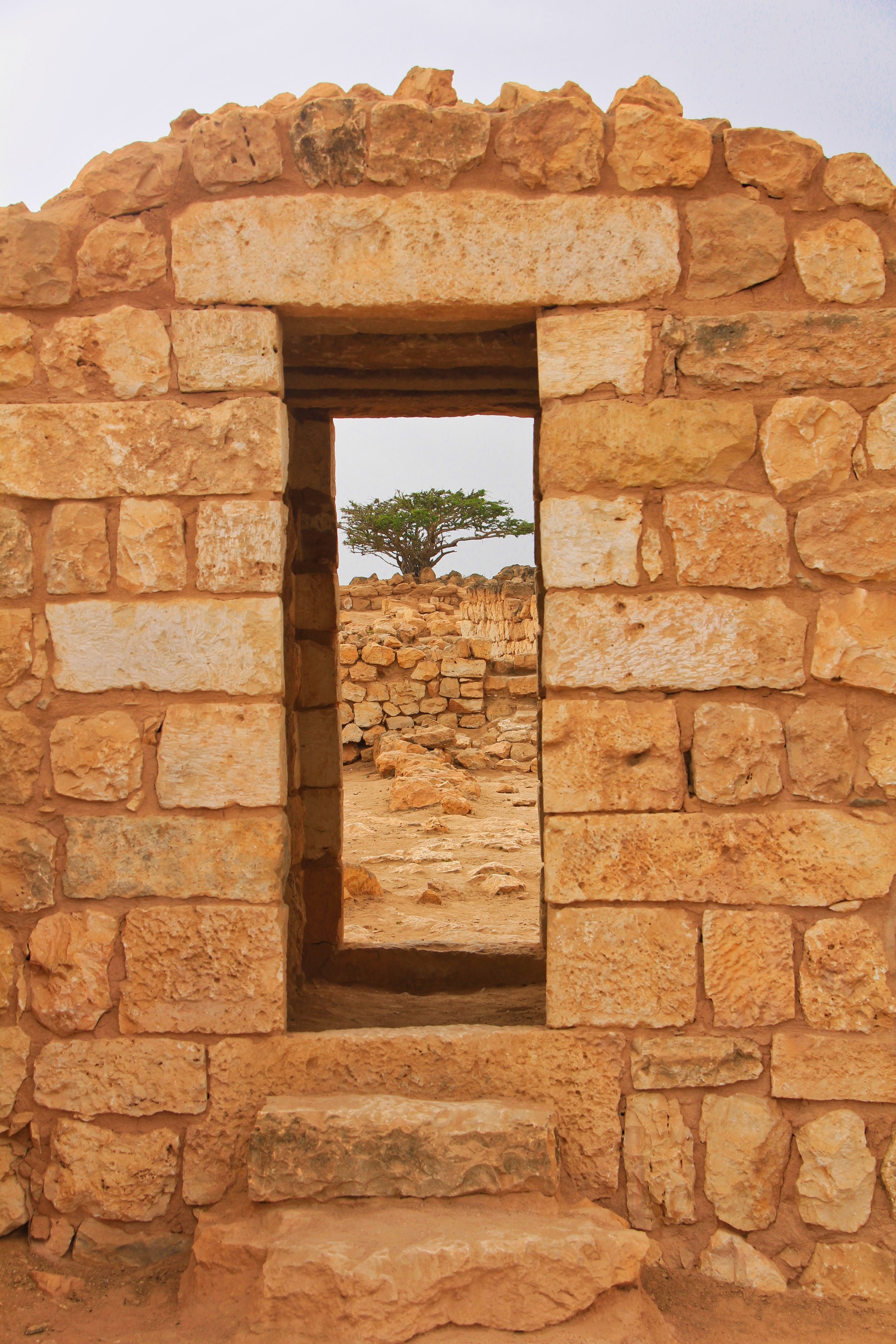Frankincense and the Christmas Story
The Christmas story is a special one, whether you are a believer or not. Especially the bit about the three mysterious kings who followed a star out of the east. I thought long and hard about that story a few years ago when I was on a press trip to Southern Oman, right down next to the Yemeni border. Our guide took us to a very special place - an archaeological ruin right out in the middle of nowhere by the Indian Ocean - and I read an information sign saying that just ab out all the world’s supply of frankincense used to go out through the sea-facing door of the old fortress.
I was fascinated. I imagined that lump of this strange aromatic tree resin may have come through the portal on their way to that famous birthplace in Bethlehem. It sent a rather lovely shiver down my spine - and I say that even though I am not at all religious… I wrote this article soon after the visit…
You don’t have to be religious to be enchanted by the Christmas story. Every part of the tale surrounding the birth of baby Jesus in Bethlehem seems to resound with a beauty and a profound sense of magic and mystery. But apart from the idea of an “immaculate conception”, perhaps one of the strangest parts of the best known story in the world is the appearance of three kings bearing gifts.
Khor Rori
Who were these magi? What was a magi? Why did they follow that star and ride their camels quite so far in its nocturnal beam of light? And why gold, frankincense and myrrh?
As a child growing up in the rural West Country, the story of the Three Kings of Orient struck me as being more exotic and bizarre than any other part of the Christmas tale. Especially the mention of those two latter gifts - frankincense and myrrh.
Maybe other kids in my class knew what these items were. Even when my father explained something about “incense” and “fragrant oil” I was none the wiser. But I liked the sound of those mysterious gifts they’d brought for a baby in a manger. And, unlike 99 out of 100 things I learned at school as a child, I always remembered the two words. Frankincense and myrrh. Who doesn’t have these curious and unknowable things on the tip of the tongue at Christmas-tide?
Frankincense collecting in Southern Oman
Then one winter’s day standing on the edge of a desert gazing at a very ancient and empty ruin on the side of the Indian Ocean, a man called Mussaiam said to me: “You see that opening in the old wall? There was a time when all the frankincense in the entire world went through that doorway.”
When I read the small rusting metal interpretation board shoved into the sand near the door at Khor Rori, it confirmed what Mussaiam had said - and it also informed me that this ancient fortress had held sway along this coast from the 4th century BC to the 5th century AD.
Which sent shivers down my spine. Because it meant that the Three Kings - or at least the Magi called Caspar who carried frankincense to Bethlehem - must have passed right through this small door.
It was the only sea-facing aperture in the fortress and in this way the folk who ran the place - and controlled the frankincense trade - could monitor and tax the extremely precious incense going out into the wider world.
Frankincense slowly drips from the tree
When Mussaiam saw how excited I was, he began to explain that the area that makes up the very southern tip of Oman has always been known as The Land of Frankincense. It has been one of country’s most famous and highly prized natural products since antiquity, and its unbelievably exotic aroma can be sniffed everywhere, wafting out of homes, mosques and souks and even through to modern office blocks and hotel lobbies.
Most of the world’s frankincense is now harvested in Somalia, but the Omani version is the one connoisseurs go for, especially since the Yemeni supplies dried up because of the ongoing internecine war. Indeed this part of Oman, known as Dhofar, is on the border of Yemen and it is the frankincense from here that is considered to be the world’s finest.
I asked Mussaiam to explain what frankincense actually is, and with a shrug he said we’d go and find some. With much tortuous twisting and turning we went deep into the coastal mountains past the city of Salalah and beyond a coastal village called Mughsayl. As coastlines go, this must be one of the most dramatic in the world. Vertiginous, impenetrable, wild, empty…
A frankincense tree grows wild in the mountains above Mughsayl
All you see are rocks, more rocks, the odd camel, and the occasional frankincense tree. We climbed some crags to reach a ragged grove of these trees and Mussaiam showed us how its boughs would instantly bleed a pure white liquid gum if nicked with a knife.
This is frankincense - and the stuff that exudes from the brach immediately after the first cutting is reckoned to be the best you can get. It’s a resin and it can be taken from four different trees of the Boswellia genus, particularly the Boswellia sacra, which thrives in the arid mountains around Salalah where it can survive the most inhospitable conditions imaginable.
The few trees we found were growing straight out of solid rock.
These tough little examples were not much more than 15 feet in height and they had a peeling, papery bark. Tapping and collection is a skilled business - the harvesters allow the “tears” (as the weeping gum is called) to turn white in the sun and harden before they take them from the tree.
Almost all frankincense is collected from trees growing in the wild (they are notoriously difficult to cultivate) which somehow adds to the mystique.
Mussaiam immediately shoved some of the gum into his mouth and began to chew it because he said it had miraculous health properties. We did the same, although mine only remained within my lips for a second. I found it gritty and the flavour very, very, unpleasant indeed.
Arabic custom has it that the resin is good for a healthy digestion and soft glowing skin. Modern medical uses are currently being investigated, including a possibility that it might be beneficial as a treatment for Crohn’s disease, as well as osteoarthritis and even cancer.
There are quite a few varieties of frankincense and around the Salalah area you can visit small workshops where experts sort the resin by hand. It is graded according to colour, purity and aroma. The whiter and purer the colour, the better the grade. Varieties that appear to have a yellowish tinge are less highly valued, while at the bottom of the scale come the darker examples from Somalia.
The stuff I brought home was the very purest white - and a couple of tiny lumps left on the hot-plate of my wood-burning stove is enough to fill the entire house with scent at Christmas.
It helps a non-believer like me to remember the best known story in the world - and its amazing scent sends me to bed at nights during the festivities wondering who on earth the enigmatic Caspar was, and why he and his friends made such an extraordinary journey bearing gifts just over 2000 years ago.














